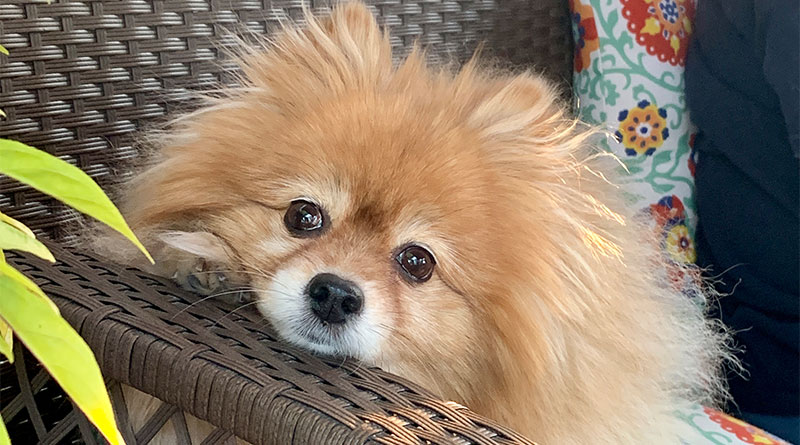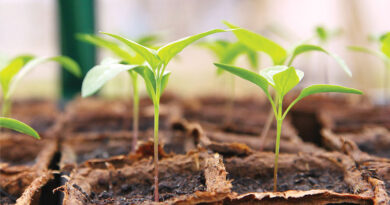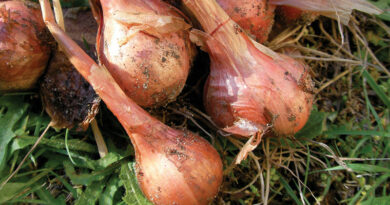Harmful Plants
Pets love gardens. They react to gardens as much as we do, becoming euphoric and running through the plants, smelling the flowers, nibbling this or sampling that. Herein lies the potential problem. While most cats and dogs have a pretty good instinct about what’s good or bad for them, the pampered housebound pet may not be as savvy as its ancestors. To be perfectly safe, there are some plants that are harmful to both pets and kids so you should avoid growing them in places where pets have access.
 Most gardeners put in a tomato plant or two, but did you know that the leaves are very toxic and harmful to pets? To be safe, the pet owner can place tomato plants in a container and make that the container inaccessible to pets. While the fruit is safe, the leaves can cause great grief, including gastrointestinal upset, confusion, weakness and other symptoms. So too will English ivy, delphiniums, daffodil, geranium (the species, not Pelargonium), lily-of-the-valley and lupine. Beware the trumpet vine and angel’s trumpet. Bleeding heart should be avoided, and so should morning glory and periwinkle. Even rosemary can be a problem.
Most gardeners put in a tomato plant or two, but did you know that the leaves are very toxic and harmful to pets? To be safe, the pet owner can place tomato plants in a container and make that the container inaccessible to pets. While the fruit is safe, the leaves can cause great grief, including gastrointestinal upset, confusion, weakness and other symptoms. So too will English ivy, delphiniums, daffodil, geranium (the species, not Pelargonium), lily-of-the-valley and lupine. Beware the trumpet vine and angel’s trumpet. Bleeding heart should be avoided, and so should morning glory and periwinkle. Even rosemary can be a problem.
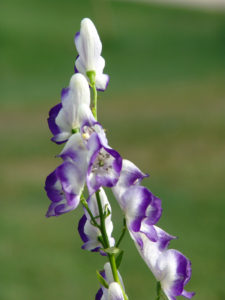 Monkshood can be deadly to animals and even to humans when they are simply handling it (gardeners, wear gloves when working with monkshood!). Water in a vase containing monkshood can cause death to a cat or a dog.
Monkshood can be deadly to animals and even to humans when they are simply handling it (gardeners, wear gloves when working with monkshood!). Water in a vase containing monkshood can cause death to a cat or a dog.
The leaves and buds of some hydrangeas are dangerous to dogs and kids. Some pets can be allergic to certain types of clover in the lawn and should avoid creeping Charlie.
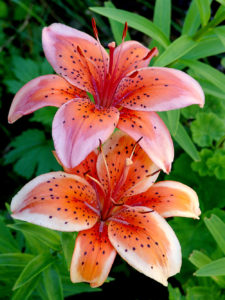 Lilies are very dangerous to cats, who can suffer kidney failure from eating lily leaves, and yucca can send a dog into seizures. Most bulbs are toxic to dogs, so if your dog is a garden digger, be sure it can’t get at those tulip, elephant ears, gladiola or hyacinth bulbs, all of which can make your dog very ill. Hibiscus can make a dog vomit blood.
Lilies are very dangerous to cats, who can suffer kidney failure from eating lily leaves, and yucca can send a dog into seizures. Most bulbs are toxic to dogs, so if your dog is a garden digger, be sure it can’t get at those tulip, elephant ears, gladiola or hyacinth bulbs, all of which can make your dog very ill. Hibiscus can make a dog vomit blood.
Now don’t panic. The list of safe plants is very long and covers most of the flowers we commonly grow. Bee balm, bachelor’s button and brown-eyed Susan, coleus, cosmos and coral bells, dahlia and dandelion are among the safe plants. Impatiens, purple coneflower, sunflower and snapdragons are also pet-friendly. While some cats don’t like petunias, my little “grand-dog”, Maggie, adores them and often comes in from a run in the garden with petunia blossoms clinging to her long, fluffy white coat.
In the “lily” family, canna are safe. Astilbe, hosta and Jacob’s ladder are also on the safe list. And so too, of course, is catmint or Nepeta, which is its botanical name.
Both cats and dogs commonly eat grass and this is perfectly safe and normal behaviour. It is thought to be a kind of self-medicating action, settling the stomach or acting as a laxative or as a mechanism that allows cats to regurgitate hair balls, and it may be why some indoor pets turn to houseplants. If this is the case, ask your vet what green vegetables are safe for your pet – perhaps, broccoli or string beans – and provide these as a side dish to their manufactured foods. You could also plant a pot of grass (the type you grow as lawns) for them.
Avoid onions which can cause anaemia in pets. Other plant-based foods to avoid are chocolate and avocado (dispose of avocado pits and skins in a place where your pets cannot get at them). Grapes and raisins have also been linked to kidney failure in pets.
And if your pets have access to your garden, be sure to keep it clear of pesticides. You don’t want your puppy getting a belly full or chemicals when nibbling the grass.
And those bad houseplants? At the top of the list of harmful plants is Dieffenbachia, also known as dumb cane because it numbs the tongue, burns the mouth, and causes difficulty in swallowing, as does calla lily. Azalea, asparagus fern, most ivy, Jerusalem cherry, philodendron, poinsettias, schefflera (umbrella plant), and amaryllis are also known offenders, but you can feel safe with African violet, pelargonium, lipstick vine, and variegated philodendron as well as spider and prayer plants.
In the harmful plant list, symptoms and effects range from diarrhea, vomiting and changes in heart rate to drooling, disorientation and death. To keep your dearly loved pets safe from harm, take precautions in choosing your plant list. Keep your pet safe, teach them to not eat plants (except grass) and enjoy your garden.



